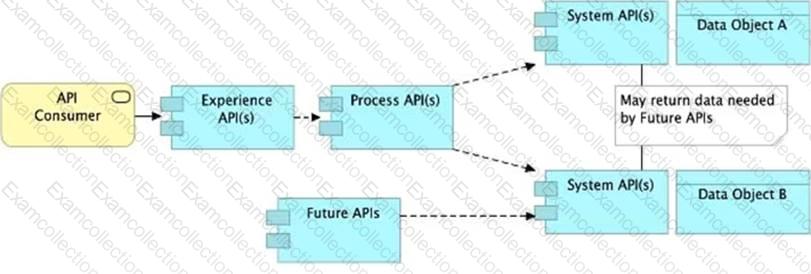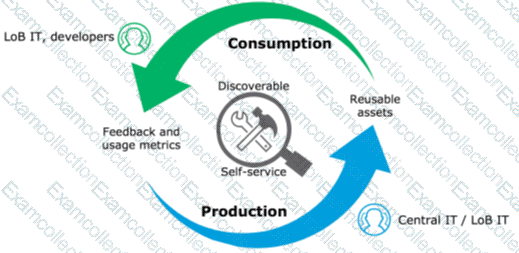Salesforce MuleSoft-Platform-Architect-I - Salesforce Certified MuleSoft Platform Architect (Mule-Arch-201)
Total 152 questions
Refer to the exhibit.

A developer is building a client application to invoke an API deployed to the STAGING environment that is governed by a client ID enforcement policy.
What is required to successfully invoke the API?
Refer to the exhibit. An organization needs to enable access to their customer data from both a mobile app and a web application, which each need access to common fields as well as certain unique fields.
The data is available partially in a database and partially in a 3rd-party CRM system.
What APIs should be created to best fit these design requirements?

A) A Process API that contains the data required by both the web and mobile apps, allowing these applications to invoke it directly and access the data they need thereby providing the flexibility to add more fields in the future without needing API changes
B) One set of APIs (Experience API, Process API, and System API) for the web app, and another set for the mobile app
C) Separate Experience APIs for the mobile and web app, but a common Process API that invokes separate System APIs created for the database and CRM system

D) A common Experience API used by both the web and mobile apps, but separate Process APIs for the web and mobile apps that interact with the database and the CRM System
An API experiences a high rate of client requests (TPS) vwth small message paytoads. How can usage limits be imposed on the API based on the type of client application?
An established communications company is beginning its API-led connectivity journey, The company has been using a successful Enterprise Data Model for many years. The company has identified a self-service account management app as the first effort for API-led, and it has identified the following APIs.
Experience layer: Mobile Account Management EAPI, Browser Account Management EAPI
Process layer: Customer Lookup PAPI, Service Lookup PAPI, Account Lookup PAPI
System layer: Customer SAPI, Account SAPI, Product SAPI, Service SAPI
According to MuleSoft's API-led connectivity approach, which API would not be served by the Enterprise Data Model?
An API implementation is being designed that must invoke an Order API, which is known to repeatedly experience downtime.
For this reason, a fallback API is to be called when the Order API is unavailable.
What approach to designing the invocation of the fallback API provides the best resilience?
Refer to the exhibit.
What is the best way to decompose one end-to-end business process into a collaboration of Experience, Process, and System APIs?
A) Handle customizations for the end-user application at the Process API level rather than the Experience API level
B) Allow System APIs to return data that is NOT currently required by the identified Process or Experience APIs
C) Always use a tiered approach by creating exactly one API for each of the 3 layers (Experience, Process and System APIs)
D) Use a Process API to orchestrate calls to multiple System APIs, but NOT to other Process APIs

Which of the below, when used together, makes the IT Operational Model effective?
When designing an upstream API and its implementation, the development team has been advised to NOT set timeouts when invoking a downstream API, because that downstream API has no SLA that can be relied upon. This is the only downstream API dependency of that upstream API.
Assume the downstream API runs uninterrupted without crashing. What is the impact of this advice?
What do the API invocation metrics provided by Anypoint Platform provide?
Once an API Implementation is ready and the API is registered on API Manager, who should request the access to the API on Anypoint Exchange?




 Diagram, arrow Description automatically generated
Diagram, arrow Description automatically generated